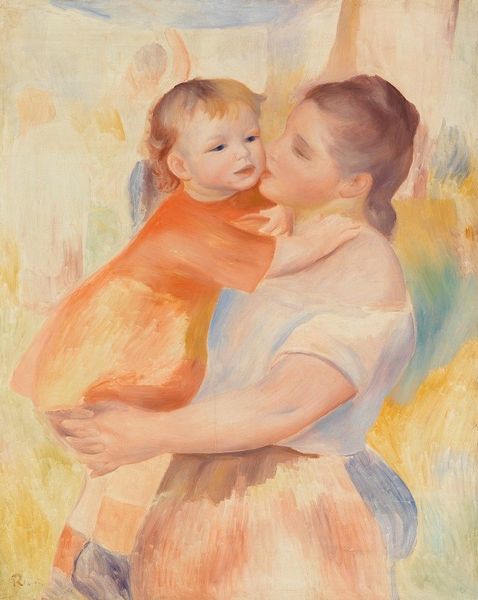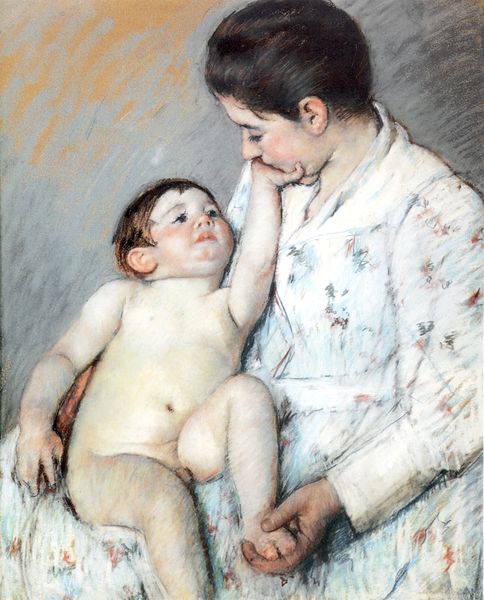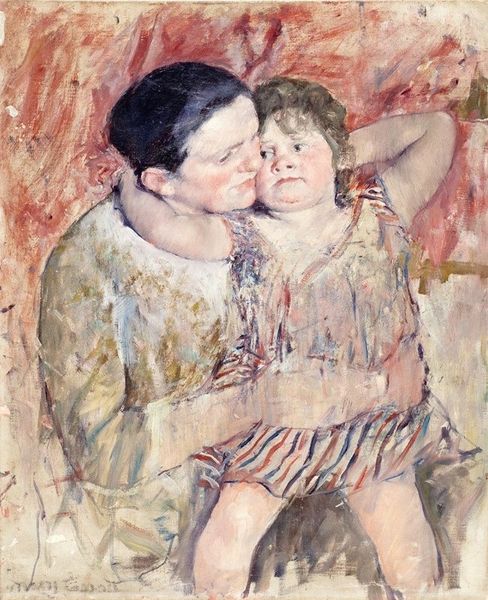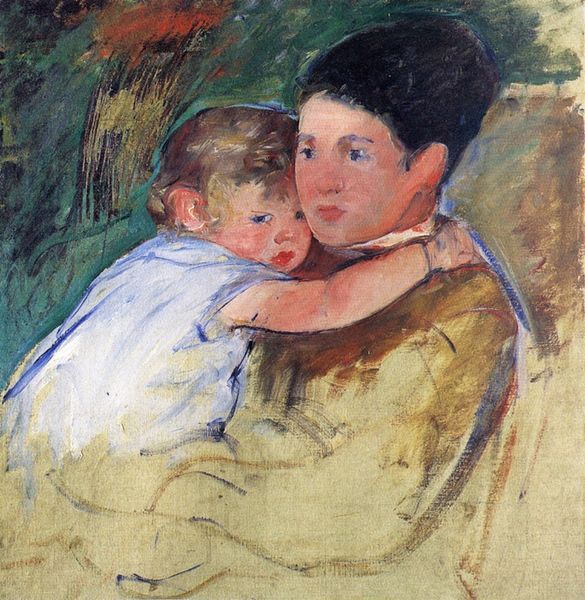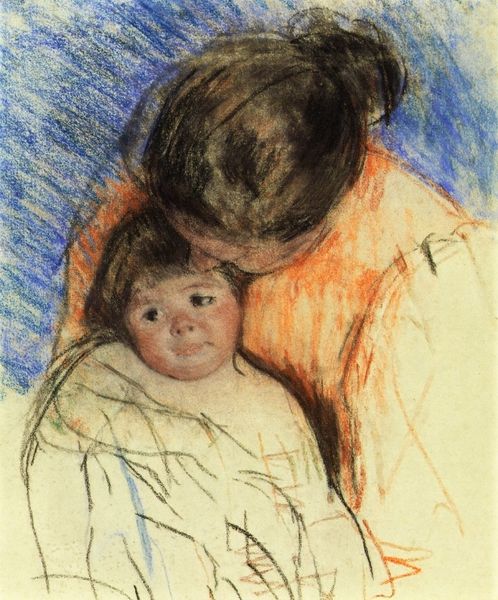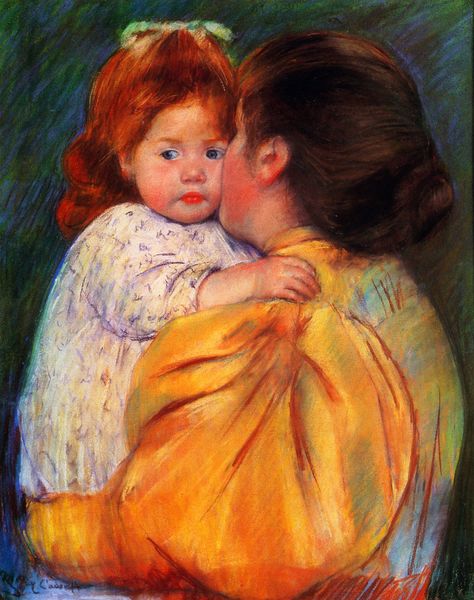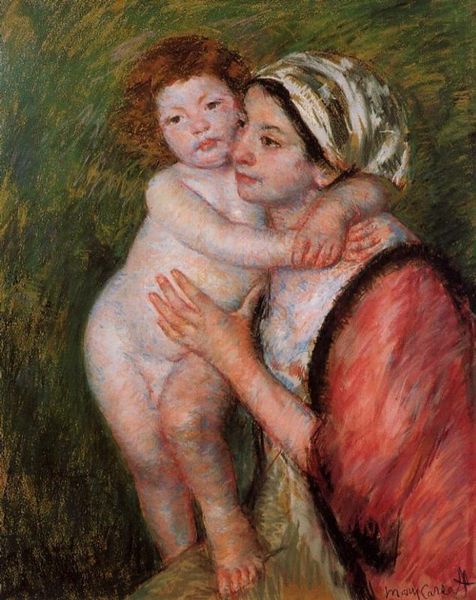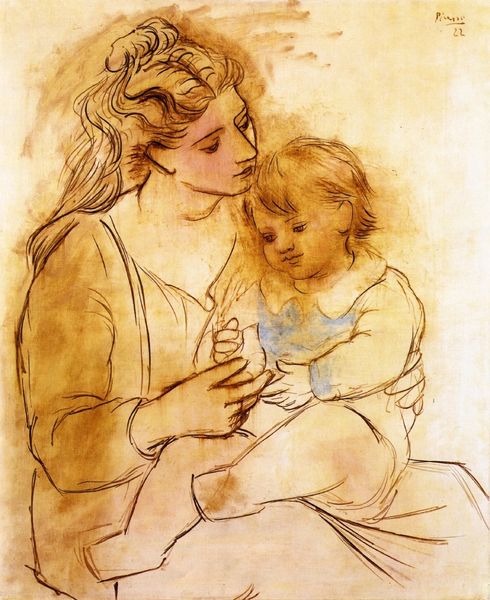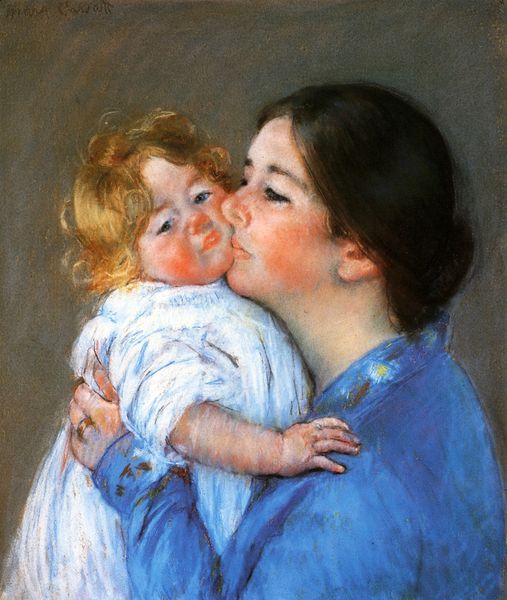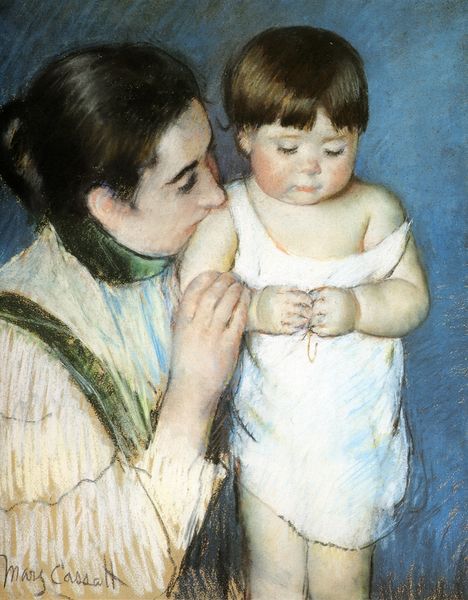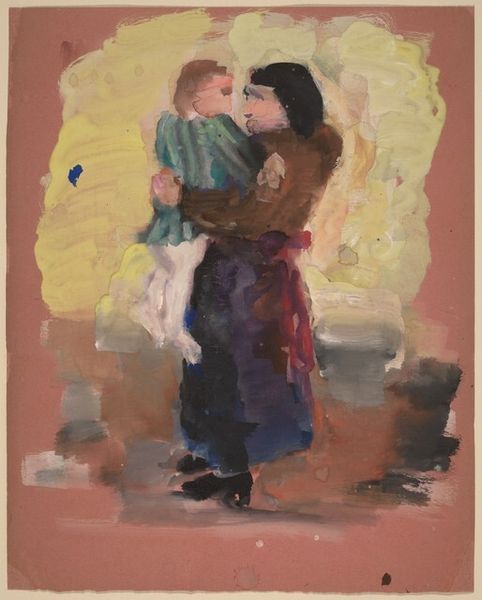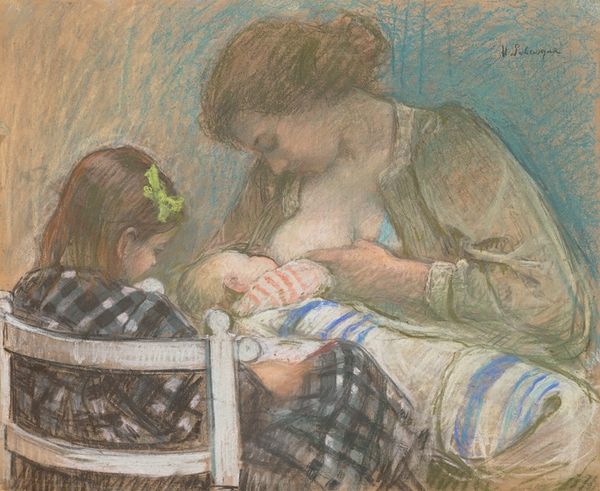
Copyright: Public Domain: Artvee
Editor: This is "Laundress and Her Child" by Pierre-Auguste Renoir, created around 1886 using pastel. It has such a tender, intimate feel to it. What's your interpretation of this work? Curator: The intimate moment is definitely the first thing we notice, but it's important to consider this tenderness within the historical context of women's labor in the late 19th century. Laundresses often faced harsh working conditions, and were responsible for the intensive labor of cleaning clothes. Does the seeming fragility of the pastel medium then contrast the true experience of laundresses? Editor: That's a powerful contrast I hadn't considered. So you're saying the apparent softness almost masks a harsher reality? Curator: Exactly. Renoir often depicted scenes of everyday life, but even in seemingly straightforward images like this one, there are opportunities to explore social and economic disparities. Do you notice anything about the other women working in the background and the mother and child embracing? Editor: Now that you mention it, the background figures seem almost ghostlike compared to the mother and child, less detailed. It emphasizes their isolation as individuals maybe? Curator: Possibly so! Consider how Renoir might be commenting on the individual stories within the broader societal narrative of working-class women, contrasting the support of her fellow women with the isolating act of mothering. It gives pause to see the social constraints faced by women with limited social or economical recourse and their everyday strength to fight to survive. Editor: Wow, that gives me a lot to think about. I really appreciate your insights! Curator: Likewise! Exploring art through the lens of social history adds so much depth to our understanding.
Comments
No comments
Be the first to comment and join the conversation on the ultimate creative platform.
